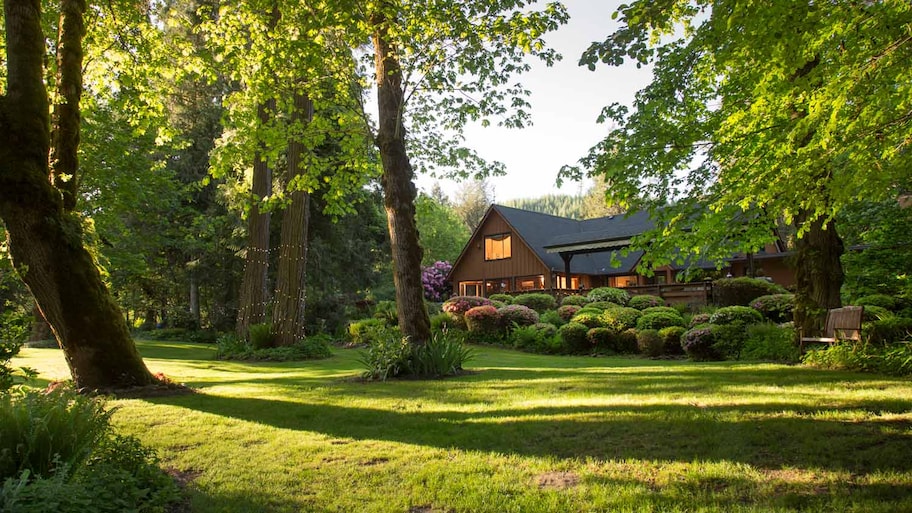9 Essential Maintenance Tips for Healthy Trees
Growing healthy trees is like raising healthy kids (well, sort of)


Trees add natural beauty and shade to your yard, not to mention improve air quality. It’s important to remember, though, that whether you’re considering planting new trees or improving existing ones, they’re living organisms that need attention and care to thrive.
Learn how to grow and maintain healthy trees by applying these nine tips.
1. Before Planting, Research the Best Type of Trees for Your Area
The earth is home to more than 60,000 different tree species, thousands of which are grown in people’s yards across the globe. That said, not all trees are ideal for where you live.
Here are some things to consider before planting trees:
The goal of the tree. Is it for shade or privacy, or is it to show off the tree’s natural beauty?
The soil it’s being planted in. Is the tree suited for your climate and your soil’s nutrient density?
The space it needs to grow. Homeowners can grow as many trees as they wish in their yard, but should be aware of the distance needed for the tree to grow safely. Also, if it’s going to be a very tall tree, how tall will it be, and how might that impact the layout of your yard?
Research the types of trees you wish to plant to avoid potentially costly tree-planting mistakes.
2. Don’t Leave Stakes in Too Long
Stakes help a young tree flourish. However, young trees grow stronger when forced to adapt. Wind, for example, makes them sway and signals to the tree to strengthen its roots and reinforce the trunk.
If you leave the stakes, the tree may become rigid or weak. Over time, the tree’s girth might not wind up reaching the average size for that species, either.
3. In General, Limit Tree Stress
Some natural stress is good, but too much of a good thing will destroy your trees.
Tips for avoiding tree stress include:
Not bumping into trees when mowing your lawn
Carefully researching lawn irrigation techniques and their effects on trees before implementing them
Carefully pruning and maintaining trees as they grow (see #6)
Too much watering (which can limit root growth)
High temperatures
Low moisture levels
Remember, trees are living organisms that must recover from the stresses placed on them—time and energy that would otherwise be spent growing. Perform a tree care checkup each spring to look for signs of stress like yellow leaves and cracking wood. This will help keep your trees healthy year-round.
4. Water Trees Regularly
New trees need more frequent watering, and may benefit from getting a soaking every day. However, giving them water once a week is probably better as trees grow.
Again, this is something you should research in the context of your climate and tree species. A red maple tree (which absorbs a ton of water) may need far more watering in Ohio than in Oregon, where rainfall is more consistent. Similarly, summer tree care may look different than fall or winter.
5. Apply Fertilizer Annually
Fertilizers are packed with nutrients that enable photosynthesis and growth to occur. In the same way our bodies need vitamins and minerals to function at their fullest capacities, trees need healthy soils around them to enable growth and development.
Laying new fertilizer each year for young trees is often recommended. After three to five years, putting down new fertilizer every two to three years is probably enough.
6. Prune Your Trees Consistently
Many homeowners don’t realize how important pruning a tree is as part of maintenance.
Some of the benefits of pruning trees include:
Removing harmful insects and infections.
Eliminates or reduces fungi, disease, or other harmful sections of the tree.
Enhancing the look of your trees.
Can promote better sunlight to certain parts of the tree.
It’s best to prune trees (as a general rule) during the winter months when you can assess the damage sans leaves. Don’t overdo it, though. Taking away too much of a tree can harm it.
7. Keep Grass Away From Trees
Neither trees nor grass benefit from growing too close to one another. They zap nutrients and moisture from one another, and the shade from a tree can prevent grass from growing. If you’re laying down fresh trees or trying to improve the health of current ones, create a barrier between grass and tree.
You can do this by adding mulch. Adding mulch around the base of a tree helps provide a barrier from grass (and your mower). It also helps prevent moisture levels from rising and keeps the base of the tree cool during the summer months.
8. Stay on Top of Pest Control
Critters can wreak havoc on trees, so even a minor infestation situation is best dealt with ASAP.
To eliminate pests that harm your trees:
Identify what type of bug is harming your tree.
Research strategies for removal/control of this pest. (Be sure to factor in natural/chemically enhanced methods, and whether or not that’s safe for the type of tree you have.)
Decide whether you can tackle it DIY or whether hiring a pest control specialist is the better move.
9. Consider Hiring an Arborist or Tree Care Professional

In some circumstances, hiring a tree trimming or local tree maintenance specialist is a good idea for projects—especially ones that are out of your wheelhouse. You won’t have to climb on ladders to trim branches, and you’ll have peace of mind knowing you won’t damage your trees.
Alternatively, a local arborist can help you plan out which types of trees would fit best with your yard’s soil and natural aesthetic.



















